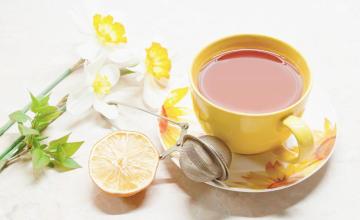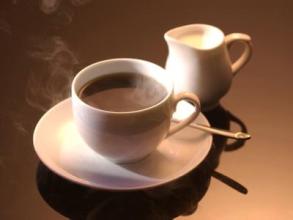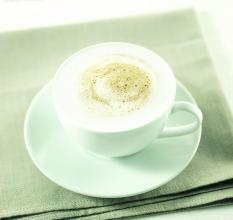Introduction of Peruvian boutique coffee bean flavor and taste manor area
Independence was declared on July 28, 1821, and the Republic of Peru was established. On October 28, 1835, Bolivia and Peru formally merged, known as the Peruvian-Bolivian Confederation. On February 20, 1839, the Confederacy completely disintegrated. Slavery was abolished in 1854. From 1879 to 1883, Peru joined Bolivia and Chile in the South American Pacific War for saltpeter production. After Peru's defeat, Chile seized Tarapaca, the world's largest saltpetre producing province, and controlled the Peruvian provinces of Tacona and Alika.
After peaceful negotiations between the two sides in 1929, Peru reclaimed the province of Tacona. In 1933, there was a border war with Colombia and the Secret War was defeated. In October 1948, Audrey launched a military coup and came to power. Belaunde Terry of the people's Action Party was elected president in June 1963. On October 3, 1968, Lieutenant General Velasco became president after a coup. General Morales took over power on August 29, 1975 and announced in 1977 that "political power would be returned to the people". In 1980, democratic elections were held to restore the civilian government. From 1990 to 2000, the leader of Reform 90, Fujimori (of Japanese origin), resigned and went into exile in Japan in November 2000. From 2001 to 2006, Toledo, leader of the Peruvian feasible party, served as president. From 2006 to 2011, Garcia, leader of the Apra party, served as president. On July 28, 2011, Humala, chairman of the Nationalist Party, was inaugurated as President for a five-year term. [3]
Administrative division editor
The country is divided into 24 provinces and one directly affiliated region (Kaya). The names of the provinces are as follows: Amazon, Ankash, Aprimac, Arekupa, Ayakucho, Cajamaka, Cusco, Vanuca, Ika, Hunin, Lalibertad, Lambayek, Lima, Loreto, Madre de Dios, Mokegua, Pasco, Piura, Puno, San Maarten, Takna, Puno Tombes province, Ukayali province. [4]
The capital, Lima (lima), has a population of 7.8167 million (2005). With an annual average temperature of 18.7 ℃, it is known as "the city without rain in the world".
Peruvian coffee beans are best known for their coffee beans from Chimacha Mayou in the middle and Cusco in the south. In addition, some areas in northern Peru also produce characteristic organic coffee. Organic coffee is made of beans grown in the shade of trees. Although the yield of coffee beans is not high because of the method of planting in the shade, its quality can reach the level of gourmet coffee. This is because shading trees can slow down the maturity of coffee trees, help coffee grow fully, make it contain more natural ingredients, breed better flavors, and reduce caffeine. Peruvian coffee is grown in a planned way, resulting in a great increase in coffee production. Peruvian coffee has a mellow taste and proper acidity, and this lukewarm coffee attitude has made more and more people like it. Peruvian coffee has always been used as one of the stable and mellow mixed beans of comprehensive coffee Peru is located in western South America with a coastline of 2254 kilometers. The Andes runs from north to south, and the mountains account for 1% of the country's area. it belongs to the tropical desert region with a dry and mild climate. Peruvian coffee is mostly grown at the foot of the Andes, where it is rich in traditional Central American top coffee beans. Peru has a short history of growing coffee, but as a rising star, Peruvian coffee is gradually gaining popularity and entering the international Peruvian coffee market:
The private Peruvian Coffee exporters Association (ComeradeExportadoresdeCafedelPeru) has been established, which is committed to improving the quality of coffee. Its primary task is to set standards and eliminate inferior products, so as to create an atmosphere of quality supremacy. This positive move heralds a bright future for the coffee industry. Since then, rising prices have encouraged farmers to actively grow coffee rather than the region's traditional cash crop, the coffee producing area of cocoa Peru:
Up to 98% of Peruvian coffee is grown in forest areas, and most producers are small farmers.
Peru's finest coffee is produced in Chanchmayo, Cuzco, Norte and Puno. Most Peruvian coffee is grown under natural conditions, but it is also difficult to confirm the cultivation of all coffee trees. Coffee grown under natural conditions costs 10% more than others. Judging from poverty, farmers may not have the money to buy chemical fertilizers and pesticides. However, it is really difficult to confirm all the coffee.

Important Notice :
前街咖啡 FrontStreet Coffee has moved to new addredd:
FrontStreet Coffee Address: 315,Donghua East Road,GuangZhou
Tel:020 38364473
- Prev

Introduction to the characteristics of Indonesian boutique coffee civet coffee flavor and taste manor area
The male of the cat has a pair of well-developed cystic aromatic glands near the perineum under the anus, and the male opens a pear-shaped sachet between the testis and the penis. There is a longitudinal crest in the front of the inner wall and 3-4 folds on both sides. There are two deep and large depressions on each side, with short hairs on the inner wall; the sachet opened by the female is mostly square, and there is only one in the middle of the inner wall.
- Next

Introduction of Cuban Crystal Coffee Fine Coffee Bean Flavor Manor
Crystal Mountain Coffee is the most representative of Cubita, the Chinese trademark Amber. Adhere to the principle of perfect coffee, in order to ensure the quality of coffee, are picked by hand; in order to maintain the flavor of coffee, coffee beans are treated by washing; in order to show the excellence of coffee, coffee is roasted moderately and deeply. Cubita is like an elegant princess with women.
Related
- Detailed explanation of Jadeite planting Land in Panamanian Jadeite Manor introduction to the grading system of Jadeite competitive bidding, Red bid, Green bid and Rose Summer
- Story of Coffee planting in Brenka region of Costa Rica Stonehenge Manor anaerobic heavy honey treatment of flavor mouth
- What's on the barrel of Blue Mountain Coffee beans?
- Can American coffee also pull flowers? How to use hot American style to pull out a good-looking pattern?
- Can you make a cold extract with coffee beans? What is the right proportion for cold-extracted coffee formula?
- Indonesian PWN Gold Mandrine Coffee Origin Features Flavor How to Chong? Mandolin coffee is American.
- A brief introduction to the flavor characteristics of Brazilian yellow bourbon coffee beans
- What is the effect of different water quality on the flavor of cold-extracted coffee? What kind of water is best for brewing coffee?
- Why do you think of Rose Summer whenever you mention Panamanian coffee?
- Introduction to the characteristics of authentic blue mountain coffee bean producing areas? What is the CIB Coffee Authority in Jamaica?

